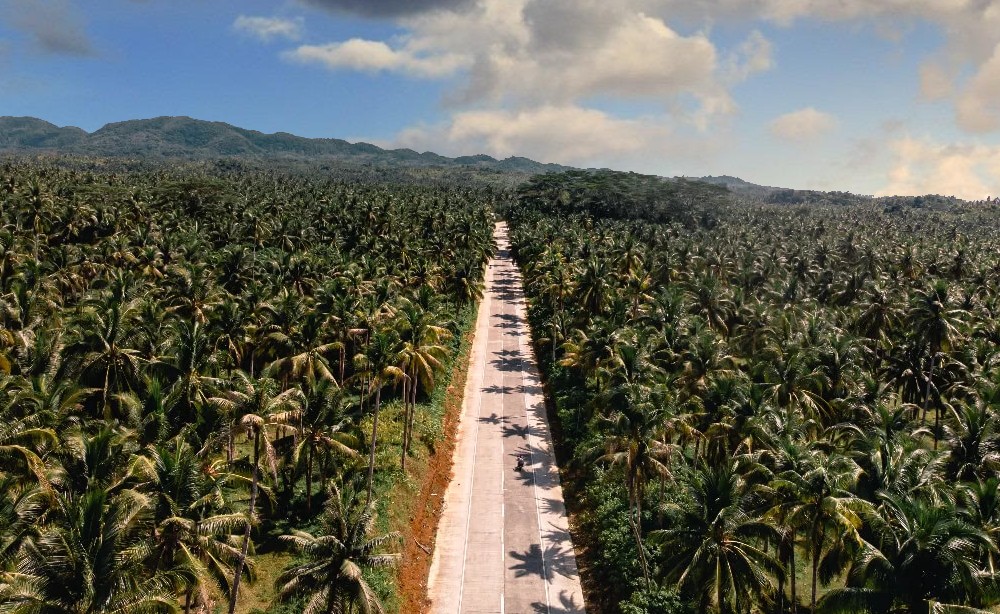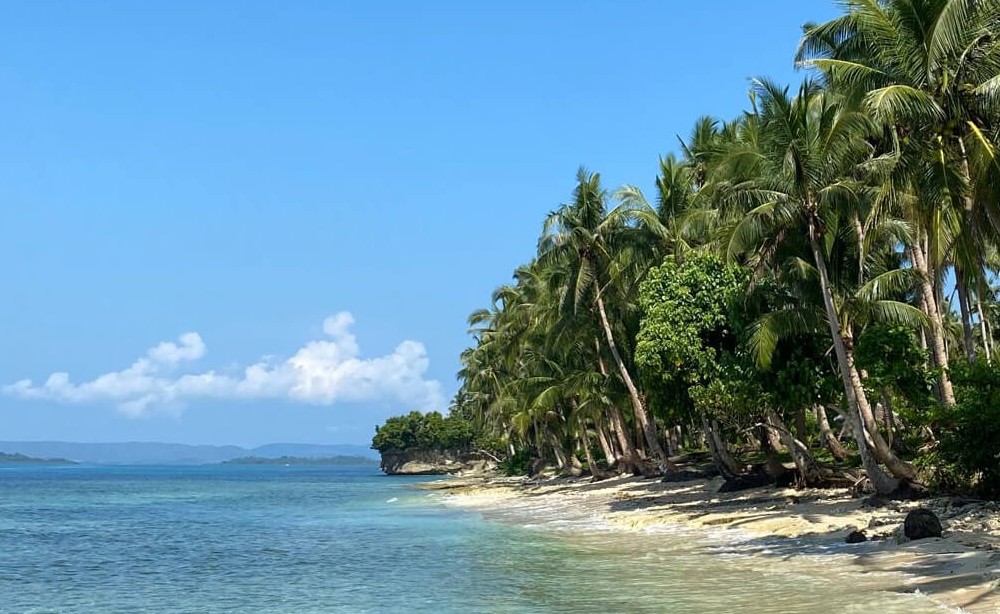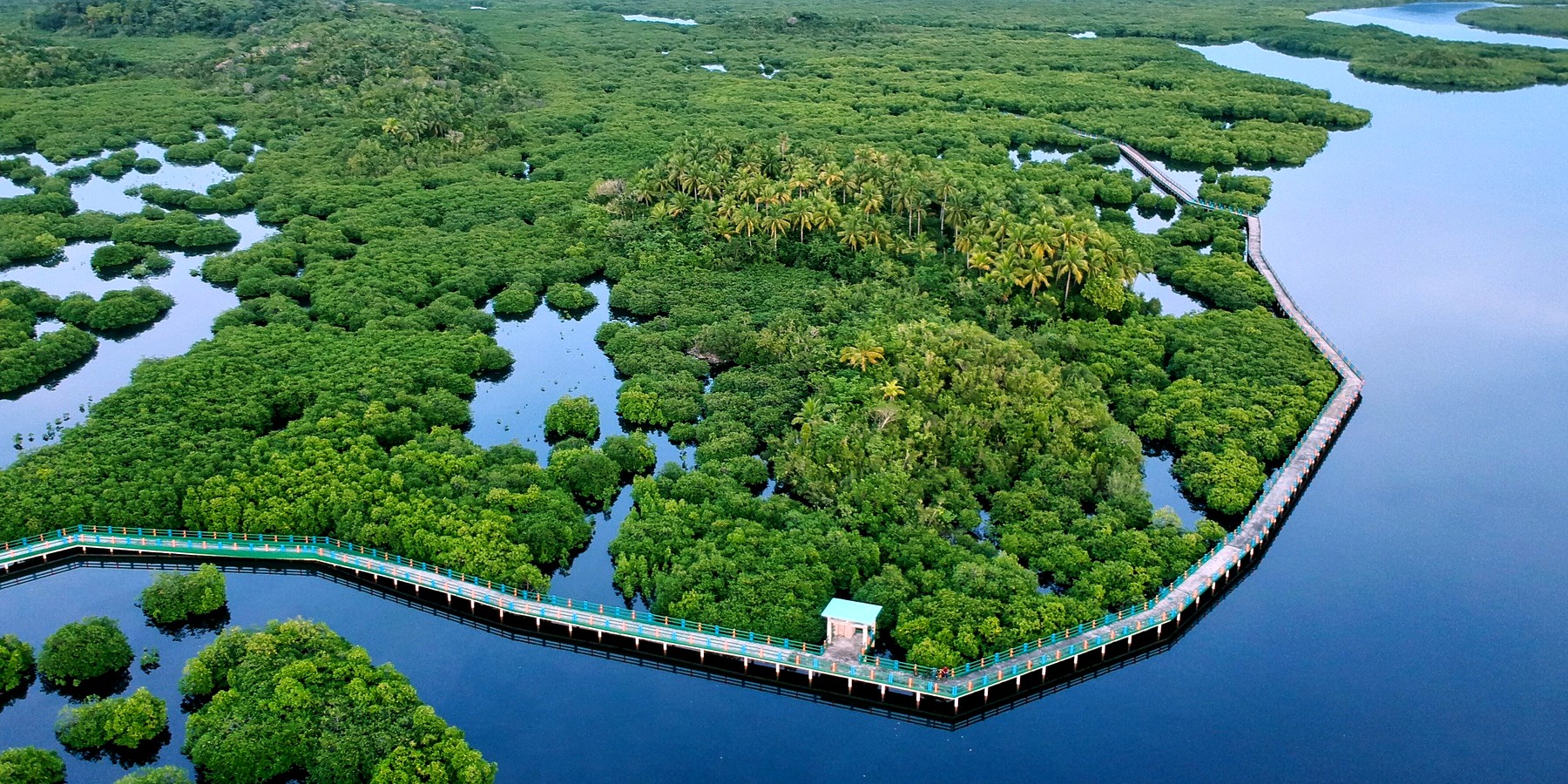Siargao Island is located in the Philippine Sea, specifically in the province of Surigao del Norte, which is in the Caraga Region of Mindanao.
13 Hidden Things to Do in Siargao Island: Local Secrets Beyond Surfing (2025)
Siargao Island, the “Surfing Capital of the Philippines”, amazes visitors with activities that go far beyond catching the perfect wave. Most tourists rush to experience legendary swells from September to November, but we found that this tropical paradise holds secrets many visitors never see.
This remarkable island sits 800 kilometers southeast of Manila and serves as a rich source of natural wonders. Enchanting lagoons, hidden caves, and pristine white beaches dot the landscape. The mysterious Magpupungko Rock Pools emerge only during low tide, while the peaceful Sugba Lagoon stands as another testament to the island’s beauty that rivals its prominent surf spots.
We spent time learning about every corner of this remarkable island and found 13 hidden experiences that rarely appear in guidebooks. These local secrets reveal Siargao Island’s true identity – an authentic Philippine paradise where adventure beckons beyond the usual tourist paths.
1) Discover the Hidden Coconut Forest Viewpoint
The Coconut Forest Viewpoint stands out as one of Siargao’s hidden gems. This stunning spot gives you an incredible panorama that captures the island’s soul at a glance. Your eyes will meet an endless sea of coconut trees that stretch toward distant mountains – making it one of the must-see spots on Siargao Island besides its famous waves.
How to Find This Secret Spot
You’ll find the Coconut View Deck along the Siargao Circumferential Road near Maasin River. It takes about 25 minutes to reach here by motorbike from General Luna. The spot sits right on the main road between the airport and General Luna. You can easily add it to your island exploration plans.
The best part? This amazing viewpoint is completely free – no entry or parking fees. Just park at the viewing platform on the roadside and take in the views. Don’t have your own ride? A habal-habal (motorcycle taxi) from General Luna won’t cost you much.
→ Coconut Forest Viewpoint on Google Maps
Best Time for Photography
The viewpoint looks magical early in the morning or late afternoon. Sunset here is something special. The sky bursts into vibrant colors as the sun sets behind the mountains.
Drone photographers will love this spot. The coconut trees create beautiful patterns from above, especially during golden hour. Want some quiet time? Visit on weekdays to avoid the crowds.
Local Significance of Coconut Farming
Coconut farming runs deep in Siargao’s culture and economy. Local families rely on these trees. They harvest them to make oil, collect water, and create handicrafts.
Super Typhoon Rai (Odette) hit hard in 2021, damaging many coconut farms across Siargao. The ILO stepped in with their “Rebuilding Better Coconut Economy” project, backed by Japan’s government, to help recovery efforts.
Local farmers now mix old wisdom with new methods. They create lasting jobs while keeping their traditions alive. The trees and farmers show amazing strength. New growth appears daily, showing nature’s power to bounce back.
2) Explore the Secret Beach in General Luna’s South
Secret Beach (also known as Guiwan Beach or Doot Beach) sits just a short ride from General Luna’s bustling surf spots. This coastal paradise captures Siargao Island’s essence beyond its famous waves with its palm-fringed shoreline, white sand, and turquoise waters. Travelers looking for a more secluded spot will find this beach a perfect escape.
Navigating the Private Land Access
The hidden gem lies southeast of General Luna along Malinao-Union Road toward Dapa Town. You can reach it by scooter in about 15 minutes. Keep your eyes peeled for a tiny “Guiwan Surfing Area” sign nailed to a palm tree – most people miss it. You can park your scooter by the roadside or pay 20 pesos at the designated parking area on Kanaloa’s right side.
Look for the entrance on the road’s left side. A peaceful 10-minute stroll through coconut palm trees leads you to the shoreline. The beach staff checks bags at the entrance because disposable plastics and bottles aren’t allowed here.
Best Time to Visit for Complete Solitude
Afternoon visits during low tide work best if you want to sunbathe, as more sand gets exposed. Early mornings tend to have fewer people around, giving you that perfect secluded feel.
Secret Beach stays nowhere near as crowded as other island beaches. Weekdays give you a better chance to enjoy the beach almost entirely to yourself compared to weekends.
Activities at Secret Beach
The beach lets you enjoy several Siargao activities based on the tide:
- Swimming: Crystal clear waters await, though they stay shallow at low tide. High tide brings better swimming conditions but stronger waves too.
- Surfing: Guiwan Beach features two right-hand point breaks that work great for longboarding and beginners. Surfboards rent for about 150 PHP per 2 hours.
- Mangrove Exploration: The beach offers canoe and paddleboard rentals to explore the fascinating mangrove ecosystem. Clean, clear water surrounds these mangroves.
- Relaxation: Coconut trees shade a grassy area that’s perfect for spreading out a blanket and chilling all afternoon.
Small snack stalls near the entrance provide refreshments since the beach doesn’t have any restaurants.
3) Experience Traditional Palm Wine (Tuba) Harvesting
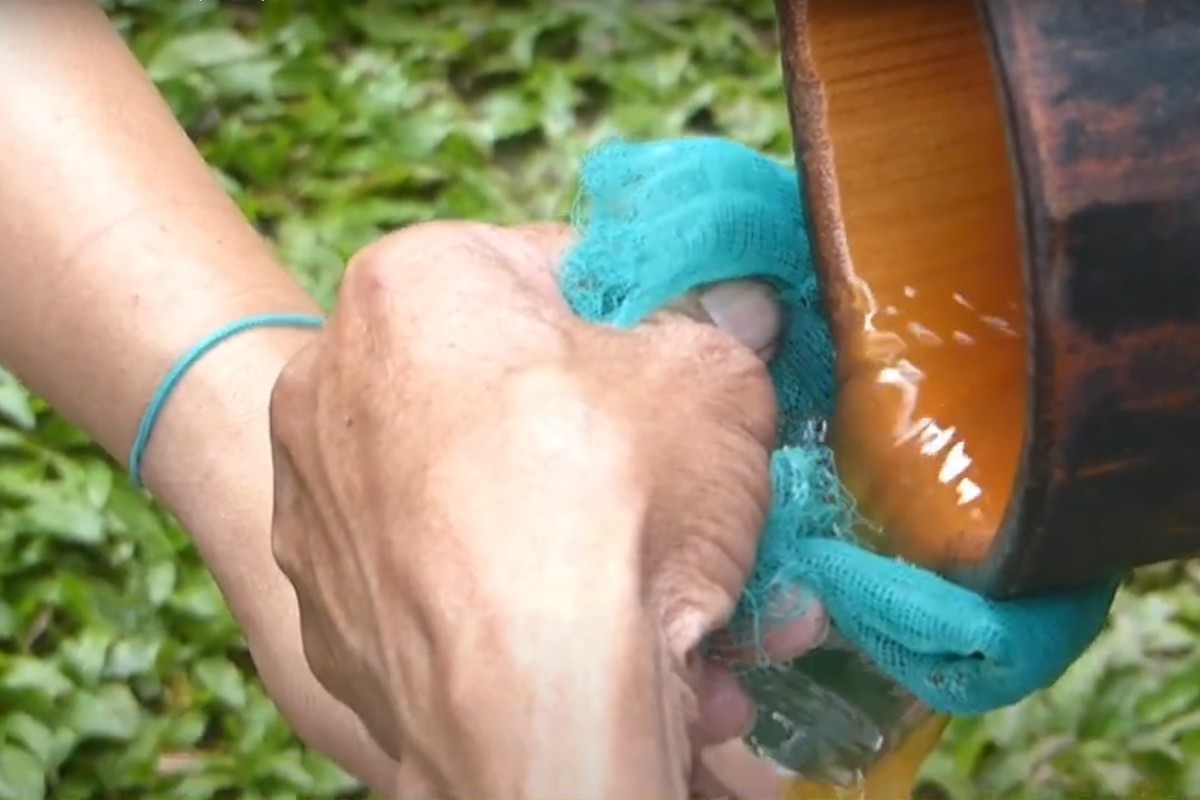
Siargao’s natural beauty is stunning, but there’s something even more special – tuba harvesting, which ranks among the most authentic experiences on the island. The local coconut wine comes from palm sap and tells a story of local life that goes back hundreds of years.
Meeting Local Tuba Harvesters
Skilled harvesters called “tappers” or “manananggot” work their magic across Siargao’s villages every day. These talented people climb tall coconut trees with amazing skill, using just a knife (called a “sanggot”) and their hands. Most tappers don’t own the coconut trees they work on. They share their harvest with the land’s owners or pay small fees to use the trees.
These tuba collectors pass down their skills through family lines, and their methods haven’t changed much in centuries. The chance to meet these harvesters lets you learn about a job that needs both physical strength and deep knowledge of palm trees. Local wisdom says the best time to see tuba collection is early morning when they gather the night’s sap.
The Process of Collecting and Fermenting
The magic starts when a harvester climbs the coconut palm and makes a small cut in the plant’s inflorescence. They attach a container – old-school bamboo or modern plastic bottles work well – to catch the sap overnight. The next morning at sunrise, they collect the sweet liquid.
The fresh sap starts clear and sweet, with no alcohol and about 10-12% sugar. The fermentation kicks in right after collection. The sap turns into an aromatic wine with about 4% alcohol in just two hours. A day later, its pH drops from neutral to around 5.5, creating a mild alcoholic drink.
Tasting Different Varieties of Tuba
Siargao offers some great tuba varieties:
- Fresh Tuba – Sweet with just a hint of alcohol, best right after collection
- Red Tuba – Gets its rich color from mangrove tree bark (barok), which locals add to slow down fermentation and boost flavor
- Bahalina – Aged tuba that develops complex, stronger flavors over months or years
Village celebrations always include tuba, sometimes mixed with condensed milk or cola to create different tastes. New tasters usually prefer the sweeter, fresh varieties before trying the more fermented ones.
4) Discover the Hidden Lagoons of Corregidor Island
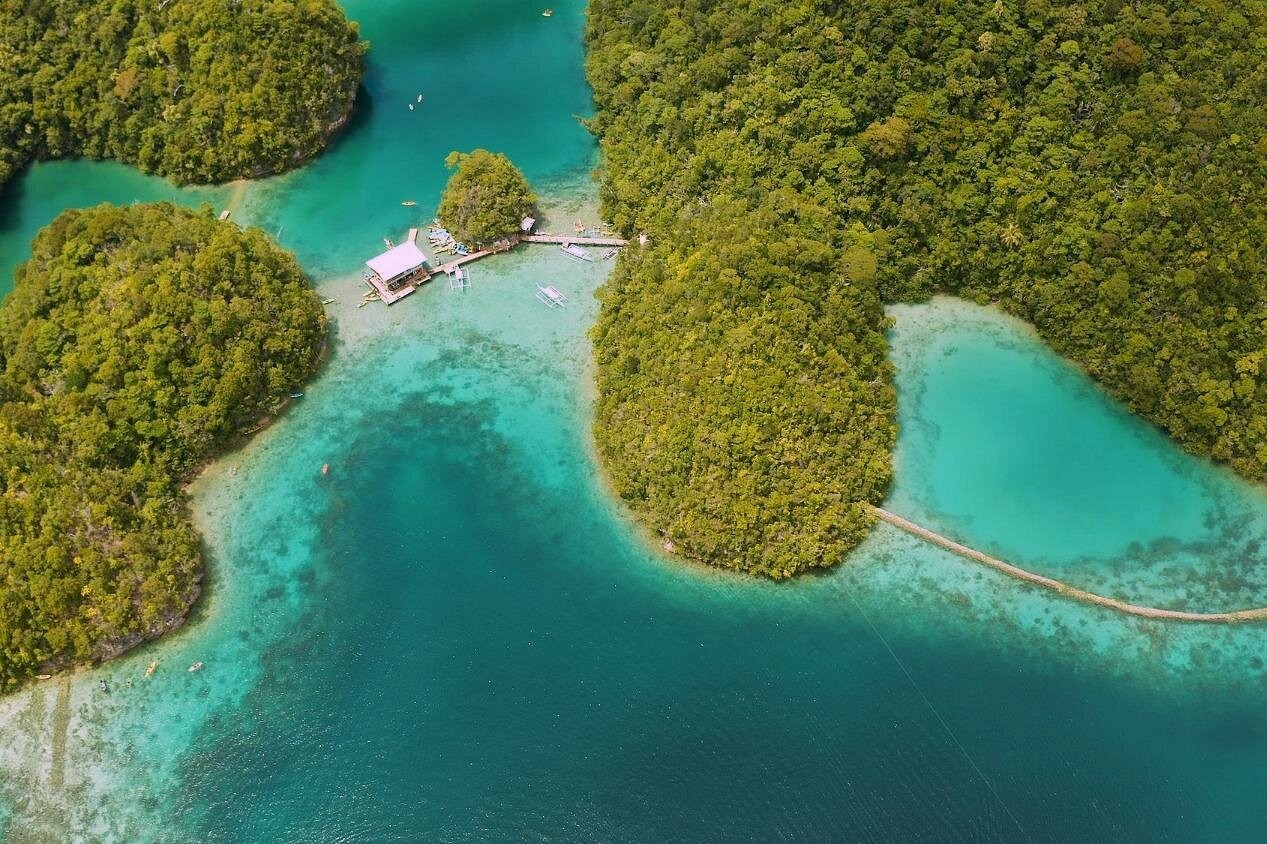
Away from the busy surf spots, Corregidor Island (locals call it Casolian Island) is a hidden paradise waiting to be found. This small slice of heaven has some of Siargao Island’s most beautiful yet underrated attractions. Its pristine beaches, rolling green hills, and vibrant coral reefs make it truly special.
Don’t mix it up with up with “Corregidor Island”, what is loacted in the north of the Philippines, we are speaking about Corregidor Island in Surigao del Norte (→ Google Maps)
How to Charter a Boat to Corregidor
You have two ways to reach this island gem. The budget-friendly option lets you join a group tour from General Luna that includes stops at Naked Island and Guyam. These tours cost about 1,500 pesos per person. Groups might prefer to charter a private boat for more flexibility, though it costs more.
Boats leave General Luna early in the morning and take 45 minutes to cross the turquoise waters. The area’s dramatic landscapes and sweeping ocean views have earned it the nickname “little Batanes”.
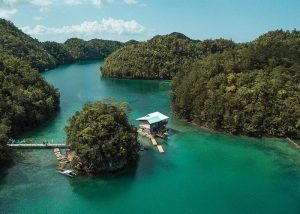
Hiking Trails Around the Lagoons
Local guides must accompany all visitors. They’ll take you on a 30-minute walk through Corregidor’s only village before heading up into the island’s center. The path starts through trees with a gentle climb. Soon you’ll see why this ranks among Siargao Island’s best experiences – scattered palm trees dot the long grass while ocean views stretch endlessly on every side.
Several trails crisscross the hilltop. Your guide knows the best spots for amazing views. Photographers will love the eastern side’s hidden coves.
Wildlife Spotting Opportunities
Corregidor’s snorkeling is just as impressive as its hiking. The island’s protected coral reefs ban fishing, creating a safe haven for marine life. This makes it Siargao’s best spot to observe underwater wildlife.
Corregidor Island shows off everything that makes Siargao special beyond its surf scene – untouched nature and real local experiences.
5) Participate in a Local Fishing Village’s Daily Life
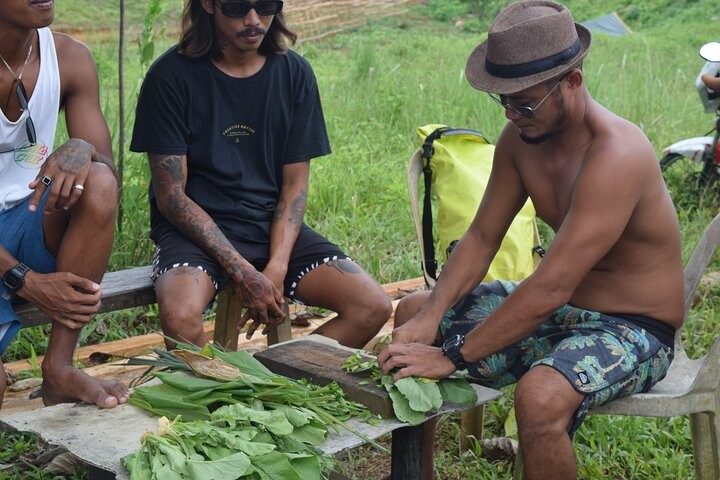
Siargao’s fishing communities hold the island’s true cultural heart. Local life follows ocean rhythms instead of tourist timetables. These communities show a different side of Siargao beyond its famous surf spots.
Morning Fish Market Experiences
The Dapa Public Market comes alive from 6:00 AM to 9:00 AM when fishermen return with their catch. Fresh fish, crabs, prawns, and sometimes octopus glisten under the morning sun. This busy marketplace shows what makes Siargao special – a fishing economy that supports many local families.
You’ll get the best market experience by showing up early to talk with the vendors. Most sellers love sharing their stories and cooking tips. I met a friendly manang (older lady) who convinced me to try her puto maya with homemade coconut jam. This combination perfectly captures Siargao’s food culture.
Learning Net Weaving Techniques
Traditional weaving workshops give visitors a glimpse into Siargao’s heritage. Local artisans pass down their skills through hands-on lessons. Several island communities now let visitors make small baskets as keepsakes.
These workshops do more than teach new skills. They help support local craftspeople and keep traditions alive as the world changes faster around us.
Community Meals with Fishermen Families
Sharing meals with local fishing families might be the best thing to do in Siargao. The island’s coastal communities build strong bonds through daily shared meals.
Fresh catch cooked in traditional ways appears on dinner tables across the island. Local dishes like humba (braised pork belly) often complement seafood specialties. During festivals, families welcome visitors into their homes. They share their food as a way to give thanks, creating real connections that show Siargao’s true spirit beyond its surf culture.
6) Trek to the Undiscovered Viewpoint Above Sugba Lagoon

Image Source: Tripadvisor
Most tourists head straight to the emerald waters of Sugba Lagoon, but only a few know about the breathtaking viewpoint high above this natural wonder. This elevated spot gives you a bird’s-eye view that will revolutionize how you see the entire lagoon system. It’s one of the most spectacular things you can do in Siargao Island.
The Secret Trail Few Tourists Know About
The trail to the viewpoint starts near the boat docking area at Sugba Lagoon. Your boat will take you to a two-story floating hut – the main hub for visitors. Look to the right where the limestone cliffs aren’t as steep. The path winds upward along the karst formations, and you can ask a local guide about it after enjoying the lagoon’s floating platforms. Local guides keep this unmarked trail quiet to preserve its natural state.
The boatmen who bring you to Sugba Lagoon are your best resource to find this trail. They’ll point you to the starting point behind the main pontoon house. The climb takes about 30 minutes on moderately challenging terrain and ended up giving hikers views that most tourists never see.
What to Pack for This Adventure
You’ll need some essential gear for this trek:
- Sturdy water shoes with good grip since rocks get slippery
- At least 1 liter of drinking water per person
- Waterproof bag to keep your valuables safe
- Light, quick-dry clothing
- Small first-aid kit
- Snacks to keep your energy up during the climb
Make sure your phone or camera has a full charge because you won’t find any charging spots in this remote location. Sugba Lagoon allows only 100 visitors with a three-hour maximum stay, so plan your time wisely between lagoon activities and the viewpoint trek.
Panoramic Photography Tips
The view from above Sugba Lagoon creates extraordinary photo opportunities that show off Siargao Island’s pristine natural beauty. The best shots come during golden hour – just after sunrise or before sunset – when soft light creates magical reflections on the water below.
Your photos should capture both the turquoise lagoon and the surrounding mangrove forests that make up a 4000-hectare sanctuary. The contrast between vibrant blue water and lush green landscape makes for stunning images. A wide-angle lens works perfectly here because the vast vista needs a broad view to truly showcase one of the best experiences in Siargao Island Philippines.
7) Visit the Artisan Workshops in Dapa Town

The creative spirit of traditional Filipino craftsmanship lives in Dapa Town’s bustling marketplace. This might be one of the most enriching cultural experiences you’ll find on Siargao Island.
Meeting Local Craftspeople
Talented artisans in Dapa Town dedicate their craft to making quality furniture and home accessories. Siargao Green Artisans, a remarkable group of local craftsmen, opens their workshop doors daily. You can watch their creative process unfold right before your eyes. These skilled makers work with wood, rattan, and natural materials while sharing their techniques and love for traditional methods. Other creative spaces like Siargao Pottery showcase the island’s growing artistic spirit.
Dapa’s creative communities keep ancient skills alive while they develop fresh techniques. Meeting these artisans will give you genuine cultural exchanges that most tourists miss. These encounters let you see how craftsmanship weaves into the fabric of daily island life.
Traditional Siargao Handicrafts
Several distinctive crafts highlight the island’s artistic heritage:
- Basket Weaving: Artisans create intricate baskets using plant fibers like rattan, featuring unique patterns passed down through generations
- Mat Making: Traditional mats (banig) crafted from local reeds serve as both practical household items and decorative pieces
- Coconut Crafts: From spoons to decorative bowls, coconut shells transform into practical and artistic items
- Boat Building: Traditional fishing boats are both functional tools and art pieces with vibrant designs that show the island’s deep connection to the sea
Supporting Sustainable Local Businesses
Workshops in Dapa put green practices first. To name just one example, Siargao Green Artisans uses recovered wood remnants (retaso) from construction sites and mixes crushed recycled glass bottles into their cement. Your support helps keep these conservation-minded approaches going.
Join hands-on workshops with weavers from Caridad or Bitaug communities to create unique mementos. Your participation directly supports local families. Buying directly from artisans means they get fair pay for their work, which helps preserve cultural traditions at risk of disappearing. These exchanges add to Siargao Island’s reputation as a community that treasures its heritage while embracing a sustainable future.
8) Experience Nighttime Crab Hunting with Locals
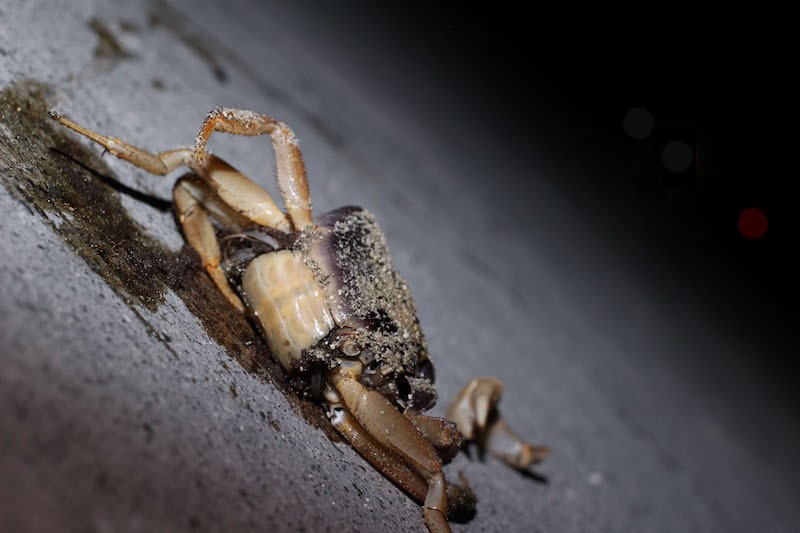
The moonlit skies of Del Carmen led me to one of Siargao Island’s hidden treasures – nighttime crab hunting with local families. Few travelers know about this authentic experience that connects you with island traditions and shows you Siargao’s natural abundance in a different light.
Traditional Hunting Techniques
Local fishermen start their crab hunts around 8 PM when these creatures are most active. They take you through shallow mangrove waters with just flashlights to spot crustaceans hiding in roots and sandbars. The locals use several time-tested methods.
You wade through ankle-deep water while scanning with flashlights – the crabs’ eyes reflect light, making them easy targets. Some fishermen still use “baklad,” traditional bamboo traps baited with fish or seafood. These traps are becoming rare as more environmentally responsible methods take their place.
Sustainable Harvesting Practices
Local communities now follow environmentally responsible crab hunting practices. The most crucial rule focuses on identifying and freeing female mud crabs. Fishermen quickly spot a crab’s gender by looking at its abdominal flap – males have triangular flaps while females have broader ones.
The Bureau of Fisheries and Aquatic Resources (BFAR) supports this practice because female crabs can produce millions of eggs. The locals also let young crabs go free so they can grow and reproduce. This helps maintain healthy crab populations for future generations.
Cooking Your Catch on the Beach
The best part comes at the end when your catch gets cooked right on the beach. After the hunt (you’ll get pretty wet, so bring a towel and fresh clothes), locals show you their ways to clean and cook these freshwater treats.
They keep the cooking simple. The crabs go straight on the grill over open coals with just a touch of seasoning to keep their natural sweetness. Visitors often call this “hands-down the freshest crab ever tasted”. It makes sense – these crabs go from ocean to plate in minutes, not days.
9) Explore the Abandoned Japanese Bunkers from WWII

Image Source: YouTube: Lost Gold of WWII: Treasure Tunnel Uncovered
Siargao’s pristine beaches and lush landscapes hide pieces of a darker history – abandoned Japanese military structures from World War II. History enthusiasts will find these old military ruins one of the most fascinating things to do on the island. These sites connect visitors to a crucial chapter in Philippine history.
Historical Context of Japanese Occupation
The Japanese forces occupied Siargao from 1942 to 1944, which changed life on the island dramatically. Local communities faced huge hardships during this time but showed amazing strength by forming resistance groups against the occupiers. The island became a battleground where Filipino soldiers joined forces with locals to fight for freedom. Japanese military commanders built defensive positions all over Siargao. They focused their forces near the coast to watch for Allied forces approaching.
Finding These Overgrown Relics
You can still find several concrete bunkers hidden in the island’s thick vegetation. Local laborers built these defensive structures under Japanese supervision – a common practice in all Japanese-occupied areas. The Japanese placed many bunkers at strategic spots along the coast and on high ground. These positions gave them clear views of possible landing areas.
The areas near Pilar municipality and the northern coast have the most visible remains for anyone interested in finding these historical sites. A short boat ride away, some structures near Surigao City include tunnels where soldiers kept their supplies and equipment. Local guides tell stories about finding military items inside these old structures, like helmets and water canteens marked with the rising sun emblem.
Respectful Exploration Guidelines
These historical sites deserve respect during your visit:
- Don’t disturb the structures or take any artifacts
- Get help from local guides who know the history
- Take photos but protect the sites
- Remember these places stand as memorials to war’s effect on local people
These old concrete remains are more than just another tourist spot in Siargao. They tell the story of the island’s brave past.
10) Participate in Traditional Coconut Oil Production

Siargao’s vibrant communities are home to families who have become skilled at traditional coconut oil production. They give visitors a unique hands-on cultural experience that you won’t find anywhere else on the island. Their authentic methods show the deep connection between locals and the coconut palms that fill the landscape.
Meeting Local Producers
Your trip into coconut oil production starts when you meet dedicated farmers like Geronimo Sabornido. He fosters coconut palms through green, organic methods. Geronimo and his team look after about 400 coconut trees. They pick native palm varieties over hybrids because these trees produce better fruit and naturally fight off local pests.
New visitors can connect with local producers through projects like “Rebuilding Better Coconut Economy.” This initiative helps rebuild Siargao’s coconut farms after Super Typhoon Rai’s destruction. These projects create jobs and let farmers pass down their traditional knowledge through generations.
The Ancient Process of Cold-Pressing
The production process begins with the harvest. Skilled workers climb 20-meter-tall palm trees with bamboo poles and attached sickles to cut down ripe coconuts. This traditional technique needs precise skills, especially when you factor in the height and humid weather.
Workers then use an iron spike called a “palau” to remove the fibrous husks from each coconut. They crack the nuts open by hand and finely grate the white pulp. The pulp gets dried gently to keep its natural qualities. The dried rasps then go through cold-pressing – a method that keeps the oil unrefined, undeodorized, and unbleached.
Sustainable Uses of Coconut Byproducts
This ranks among the most eco-friendly activities on Siargao Island. You’ll see how islanders use every part of the coconut:
- Fibrous husks become mats, ropes, and even innovative replacements for plastic fishing coolers
- Shells turn into charcoal or activated carbon
- Leftover pulp creates organic fertilizer for local farms
The island now moves beyond traditional coconut products into new items. Virgin coconut oil (VCO) production shows strong market potential globally.
11) Visit the Secret Stargazing Spot in Pacifico
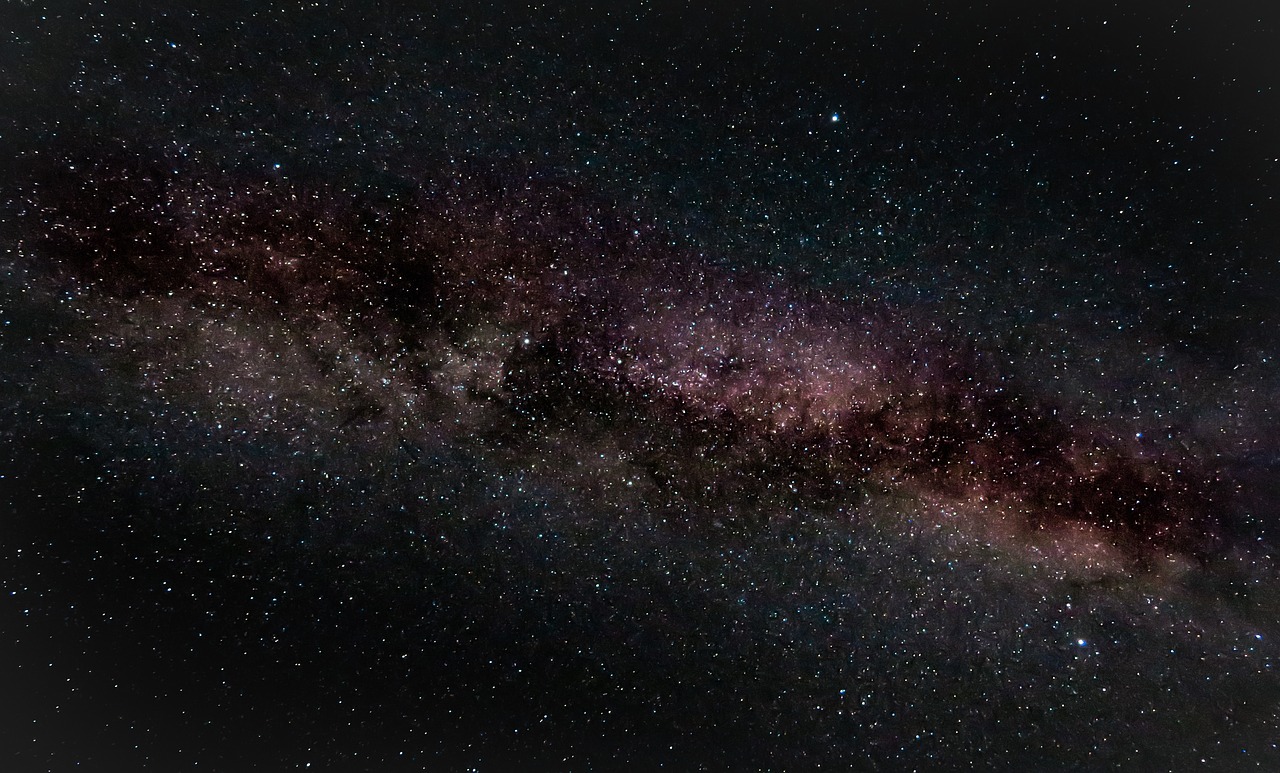
Pacifico Beach sits quietly on Siargao’s northeastern shore, a 90-minute drive from General Luna. This hidden spot with almost no internet connection lets visitors find a rare astronomical treat. The beach creates perfect conditions that make stargazing one of the most magical activities on Siargao Island.
Best Nights for Astronomical Viewing
The right timing makes all the difference for stargazing. Pacifico’s night sky looks most spectacular during new moon phases as darkness peaks completely. The current moonlight sits at 17.3% waxing crescent, which creates nearly perfect conditions for stellar observation. Your best view comes between moonset and morning twilight.
The night sky reveals several planets after sunset including Mars, Jupiter, and Uranus. The prime viewing window starts after twilight ends at 6:31 pm and runs until morning twilight begins at 4:47 am. This gives you almost 10 hours to explore the cosmos.
What to Bring for a Night Under the Stars
A successful cosmic experience needs these essential items:
- Reliable flashlight that includes red light setting (helps keep night vision)
- Comfortable blanket or beach mat
- Mosquito repellent since coastal areas draw insects after dark
- Light jacket because ocean breezes get cool
- Binoculars to see constellations better
- Thermos filled with warm drinks for chilly nights
The night sky shows its true beauty after your eyes adjust to darkness. This takes about 20 minutes of patience.
Photography Tips for Night Sky Shots
Pacifico’s celestial display challenges photographers but rewards them richly. Simple Milky Way shots work best with 20 seconds exposure at f/2.8 and ISO 2000. These settings might need adjustments based on your camera.
The biggest challenge lies in balancing foreground elements with the night sky. Dutch photographer Martien Janssen captured both lightning storms and the Milky Way over Siargao at once. This rare feat required multiple cameras with different setups.
A sturdy tripod and remote shutter release help eliminate camera shake during long exposures. Dark conditions make focusing tricky. The best approach uses manual focus set to infinity or focuses on distant objects during twilight before complete darkness falls.
12) Experience a Traditional Filipino Healing Session
Siargao’s sun-soaked exterior hides a world of traditional healing wisdom that brings culturally rich things to do on the island. Filipino indigenous medicine has passed from one generation to the next through oral traditions. This gives visitors a rare peek into authentic island life.
Meeting Local Healers
Local healers across Siargao and Surigao del Norte region keep ancient practices alive by blending physical therapy with spiritual elements. Some communities have manghihilots who specialize in massage therapy. They manipulate muscles and joints to ease pain and restore balance. Albularyos serve as general healers who combine herbs, prayers, and massage techniques to treat various ailments. Bucas Grande Island offers an authentic experience with its high levels of traditional medicine knowledge that survive despite modern influences.
Ancient Medicinal Plants of Siargao
The island’s lush environment supports many medicinal plants that local communities still use today. These natural remedies help with everything from common headaches to serious conditions like hypertension and kidney disease. People prepare plants through decoction – they boil parts until reaching the right concentration. Leaves are the most common part used. The sort of thing I love is how this plant knowledge helps preserve global heritage. It also provides practical healthcare solutions in remote areas where modern medicine remains limited.
Respectful Participation Guidelines
Respect for cultural boundaries matters most when you explore traditional healing practices. You should ask permission before joining any ritual or treatment. These healing sessions often include spiritual elements that come from ancient belief systems. Pay healers fairly for their knowledge and time. Note that these practices represent cultural heritage rather than tourist attractions. Places like Soul Tribe offer structured experiences at €1,800 for guided healing experiences. Community healers might accept smaller contributions.
13) Discover the Hidden Mangrove Boardwalk in Del Carmen
The western edge of Siargao hides a natural wonder that most tourists never see. A wooden pathway lifts visitors through the Philippines’ largest connected mangrove forest at Del Carmen Mangrove Boardwalk. This peaceful trail offers a quiet escape from the island’s bustling surf spots and ranks among Siargao Island’s most serene attractions.
Finding This Less-Visited Attraction
The boardwalk meanders through Del Carmen’s stunning mangrove ecosystem. It stretches 1.8 kilometers in one direction, and visitors take the same path back. Del Carmen Mangrove Reserve’s remarkable forest spreads across 4,871 hectares, making it the Philippines’ largest unbroken mangrove system. The hidden gem lies about 35-40 minutes from General Luna. The journey takes you past rice paddies and through Dapa town. Visitors can walk the boardwalk free of charge, and bike rentals cost just 50 pesos at the entrance.
Best Times for Wildlife Spotting
The right timing makes all the difference here. The exposed boardwalk gets hot without shade, so early morning or late afternoon visits work best. These cooler hours let you see more wildlife as birds and sea creatures become active. Sunrise visits often reveal local fishermen who navigate the narrow mangrove channels – a scene that captures Siargao’s authentic character beyond its famous waves.
Supporting Local Conservation Efforts
The UN recognized Del Carmen Mangrove Reserve as the Philippines’ 10th Ramsar Site because of its ecological value. Local communities moved from harmful practices to conservation-focused management. Their efforts paid off impressively – mangrove cutting stopped completely, illegal fishing dropped by 95%, and mangrove coverage grew by 600 hectares with an 80% survival rate. Your visit helps support these conservation initiatives while you experience one of Siargao Island’s finest attractions.
Facebook Video – Mayor Alfredo Coro II and his constituents trace the transformation of the coastal community in this inspiring video.
The annual Bakhaw Festival celebrates these vital mangroves and their marine life. Traditional music fills the air as dancers perform and boats parade through the water. People plant new mangroves too – a perfect blend of cultural celebration and environmental care.
Comparison Table
| Hidden Attraction | Location/Access | Best Time to Visit | Main Activities/Features | Special Notes/Requirements |
|---|---|---|---|---|
| Coconut Forest Viewpoint | Along Siargao Circumferential Road, 25 mins from General Luna | Early morning or late afternoon | Photography, drone shots, scenic views | Perfect during golden hour for photos |
| Secret Beach (Guiwan) | 15 mins from General Luna via Malinao-Union Road | Afternoon during low tide | Swimming, surfing, mangrove exploration | No disposable plastics allowed |
| Limestone Caves of Pilar | Pilar municipality | Check weather forecast – avoid rainy days | Cave exploration, swimming | Guide required, wear proper footwear |
| Traditional Palm Wine Harvesting | Villages throughout Siargao | Early morning | Tuba collection, wine tasting | N/A |
| Hidden Lagoons of Corregidor | 45-min boat ride from General Luna | Morning departures | Hiking, snorkeling, wildlife viewing | Local guide required |
| Local Fishing Village Experience | Dapa Public Market | 6:00 AM – 9:00 AM | Market visits, net weaving, community meals | N/A |
| Viewpoint Above Sugba Lagoon | Near boat docking area at Sugba Lagoon | Golden hour (sunrise/sunset) | 30-min trek, photography | Coordinate with boatmen |
| Artisan Workshops in Dapa | Dapa Town | Weekdays | Handicraft making, meet local artisans | N/A |
| Nighttime Crab Hunting | Del Carmen area | Around 8 PM | Crab hunting, beach cooking | Bring spare clothes |
| Hot Springs Near Santa Monica | San Benito town, 45 mins from General Luna | Weekday mornings before 9 AM | Soaking, relaxation | Ask locals about “mainit na tubig” |
| WWII Japanese Bunkers | Near Pilar municipality and northern coastal regions | N/A | Historical exploration | Guide recommended |
| Traditional Coconut Oil Production | Throughout Siargao | N/A | Oil production process, traditional methods | N/A |
| Secret Stargazing Spot | Pacifico Beach, 90 mins from General Luna | New moon phase, after 6:31 PM | Stargazing, astrophotography | Bring stargazing equipment |
| Traditional Healing Session | Bucas Grande Island | N/A | Traditional treatments, herbal medicine | Respect local customs |
| Hidden Mangrove Boardwalk | Del Carmen, 35-40 mins from General Luna | Early morning or late afternoon | Wildlife watching, walking/cycling | 1.8km one-way boardwalk |
Conclusion
Siargao is more than just a surfing destination with its amazing hidden treasures. The famous waves of General Luna attract crowds, but the island’s true cultural depth shines through authentic experiences like traditional tuba harvesting, nighttime crab hunting, and ancient healing practices.
My journey through these 13 hidden spots revealed how local communities keep their traditions alive while welcoming responsible tourism. Quiet beaches, old WWII bunkers, and untouched mangrove forests provide peaceful alternatives to busy tourist areas. The fishing villages’ warm welcome, artisan workshops, and indigenous healers create lasting connections that stay with you long after you leave.
These special places show that Siargao’s magic comes from its power to amaze people who explore beyond the usual spots. Each moment adds a new dimension to this remarkable island’s story, from watching stars at Pacifico Beach to learning the local way of making coconut oil.
Siargao rewards travelers who take time to find its hidden treasures. Bring your sense of adventure, show respect for local customs, and you’ll find your own special corner in this Philippine paradise.
FAQs
Q1. What makes Siargao unique beyond surfing?
Siargao offers diverse attractions like the Magpupungko Rock Pools, hidden beaches, and lush coconut forests. The island’s unique blend of natural wonders, traditional villages, and off-the-beaten-path experiences make it stand out as more than just a surfing destination.
Q2. Are there activities for non-surfers in Siargao?
Absolutely. Non-surfers can enjoy island hopping, exploring mangrove forests, visiting artisan workshops, and experiencing local culture. The Coconut Road and Coconut View Deck offer stunning vistas, especially during sunrise or sunset.
Q3. What are some must-visit spots in Siargao?
Beyond the famous surf breaks, visitors should explore the Magpupungko Rock Pools, hidden lagoons of Corregidor Island, and the Del Carmen Mangrove Boardwalk. The island’s secret beaches and traditional fishing villages also offer authentic experiences.
Q4. When is the best time to visit Siargao?
The dry season from March through July offers ideal weather conditions. For the best experience, consider visiting between March and April when the weather is pleasant and less humid, perfect for both beach activities and inland exploration.
Q5. What unique cultural experiences does Siargao offer?
Siargao provides opportunities to engage with local traditions such as tuba (palm wine) harvesting, participating in traditional healing sessions, and learning about coconut oil production. Visitors can also experience nighttime crab hunting and community meals with fishing families.
Traveling from Butuan City to General Luna (Siargao Island)
Traveling from Butuan City to General Luna (Siargao Island) involves a combination of land and sea transport. Here’s a step-by-step guide:
Option 1: Bus + Ferry + Van (Most Common & Budget-Friendly)
- Bus or Van from Butuan to Surigao City
- Take a bus or van from Butuan Integrated Bus Terminal to Surigao City.
Travel time: ~2.5 to 3 hours
Cost: PHP 200–300 (bus), PHP 250–350 (van)
Vans are faster but less comfortable than buses.
- Take a bus or van from Butuan Integrated Bus Terminal to Surigao City.
- Ferry from Surigao City to Dapa Port (Siargao Island)
- Multiple ferries and fast crafts operate daily from Surigao Port to Dapa Port (Siargao).
Travel time: ~1.5 to 3 hours (depending on ferry type)
Cost: PHP 250–450
Recommended ferries: Montenegro, Evaristo & Sons, JP Shipping, or FastCat (for faster trips).
- Multiple ferries and fast crafts operate daily from Surigao Port to Dapa Port (Siargao).
- Van or Tricycle from Dapa Port to General Luna
- Once you arrive in Dapa Port, take a van, habal-habal (motorbike taxi), or tricycle to General Luna (Cloud 9 area).
Travel time: ~30 to 45 minutes
Cost: PHP 50–150 per person (van/tricycle), PHP 250–300 (private habal-habal)
- Once you arrive in Dapa Port, take a van, habal-habal (motorbike taxi), or tricycle to General Luna (Cloud 9 area).
Option 2: Direct Flight from Butuan to Siargao (If Available)
- Check flights from Butuan Airport (BXU) to Sayak Airport (IAO) in Siargao. Some airlines operate direct or connecting flights.
From Siargao Airport, take a van (PHP 300) or habal-habal (PHP 500) to General Luna (45 mins).
Faster but more expensive than land-sea travel. - Google search for: Flights Butuan BXU to Del Carmen IAO
Total Travel Time & Cost
- By bus + ferry + van: ~6 to 8 hours, PHP 500–1,000
- By flight (if available): ~1.5 hours (excluding waiting time), PHP 2,500+

By the way: During our last visit to Siargao, we stayed at “The Broken Board Resort” and were very pleased with the accommodations. We had an apartment with two separate rooms (each with air conditioning), a very well-equipped kitchen, and a huge terrace. The Broken Board can be booked through Booking.com or Agoda.
